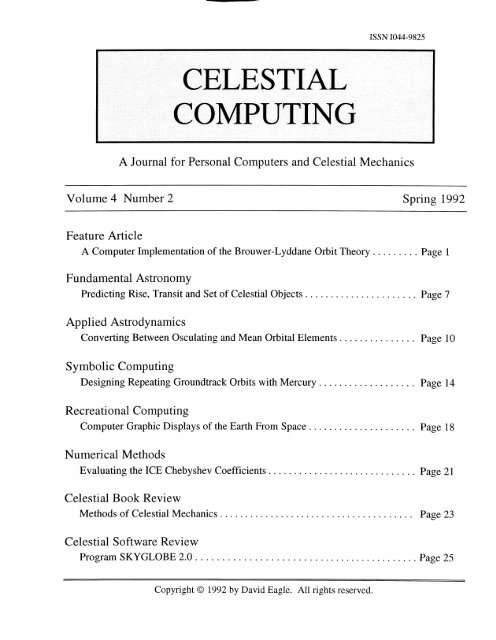
The first light of the New Crescent Moon seen from the Earth usually occurs within two days after the ecliptic conjunction of the

The beginning of the New Year in spring for ancient Egypt's sacred lunar calendar was marked not just by the equinox but additionally by the first appearance of the New Crescent Moon, i.e., the MOON'S FIRST LIGHT. In ancient Egypt, believed by some to be source of the original zodiac, the day began at sunset with the viewing of the night sky. In studying ancient astrologies, it is important to note that astrology was 'naked eye' visually pragmatic as well as mathematical. Astronomically we measure the equinoxes in terms of the relationship between the Sun and Earth only, i.e., the Sun's conjunction with the crossing of two planes: the oscillating (and hence precessing) Earth's equatorial plane and the ecliptic plane between Earth and the Sun, both projected measurements from the Earth. This year 1993, spring occurs March 20 GMT (Greenwich Mean Time) in the constellation 5 PISCES 20' 58.9" according to the Fagan/Allen ayanamsa. Although the seasons are reversed in the southern hemisphere, hence not universals, nor the basis for the zodiac, still they are important seasonal markers.

Related Addendum notes the scope of opinion in more recent astro-archaeological investigations of megalithic sites and their functions.Įach spring equinox in the northern hemisphere brings the renewal of Earth's fertility, a time of expectation and regeneration, perhaps the best time for new year's vows. What were the original principles in astrology from earliest known historical records? Implications of Fagan's and others' research regarding The First Light of the Crescent Moon on the conceptual basis & calculation of political astrology. If there are 'angular' planets or lights in these positions, they would be considered the keynote of a chart. (MC=Midheaven or Latin Medium Coeli - IC=Illium Coeli) These are the points on the Meridian, the celestial north-south great circle, crossed by the ecliptic at any time of the day. MC-IC is the noon/south - midnight/north positions at any place on earth. However, these (ASC-DSC) are the points on the horizon intersected by the ecliptic at any time of the day. The Ascendant can be thought of as the (sunrise) eastern horizon position the Descendant can be thought of as the (sunset) western horizon position.

#Skyglobe march 21 syt full#
Tread the seasons' turning paths through each year's seven dark eclipses,Įmerge to walk the Moon of your understanding in full light,Īnd return always to bless the Ground of Being - renewed.Ī> the Lights' (Sun & Moon) ASPECTS "TO" the planets ī> any planets or lights "ON" the 4 ANGLES - which are the east/ASCendant and west/DSCendant points on the horizon crossed by the ecliptic, and the south/MC-and-north/IC Meridian crossed by the Ecliptic andĬ> CONSTELLATIONS of the Sun, Moon and Ascendant (ASC=eastern horizon intersected by ecliptic, the plane of the zodiac between Sun & Earth).

I believe it is the birthright of everyone on more enlightened planets to know, at least, the actual astronomical, i.e., Star Constellation position of their Sun, and hopefully, Moon and Ascendant. I would hope that as many interested folk as possible see this info.


 0 kommentar(er)
0 kommentar(er)
